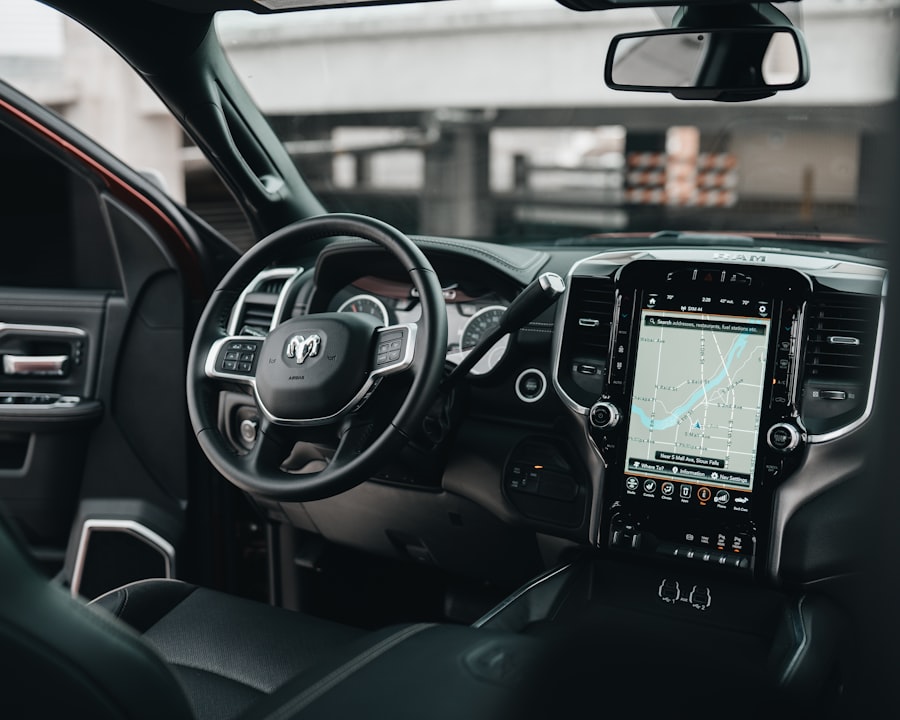Auto insurance is a necessary expense for vehicle owners, providing financial protection against accidents, theft, and other unforeseen events. However, the cost of premiums can be a significant burden for many individuals and families. Fortunately, insurance companies offer a variety of discounts that can help policyholders reduce their overall costs.
By taking advantage of available discounts, drivers can significantly lower their premiums without sacrificing the quality of their insurance. The landscape of auto insurance discounts is diverse, catering to different demographics and driving behaviors.
From safe driving records to multi-vehicle policies, these discounts are designed to reward responsible behavior and encourage good practices among drivers. As consumers become more aware of these opportunities, they can make informed decisions that not only benefit their wallets but also promote safer driving habits. This article will delve into various types of auto insurance discounts, providing insights into how they work and who qualifies for them.
Key Takeaways
- Auto insurance discounts can help you save money on your premiums.
- Safe driver discounts are available for those with a clean driving record.
- Multi-vehicle discounts are offered to policyholders insuring more than one vehicle.
- Good student discounts are available for young drivers with good grades.
- Low mileage discounts are offered to drivers who don’t drive much.
Safe Driver Discounts
One of the most common types of auto insurance discounts is the safe driver discount. Insurance companies often reward drivers who maintain a clean driving record, free from accidents and traffic violations. This discount serves as an incentive for policyholders to adhere to safe driving practices, ultimately benefiting both the insurer and the insured.
Typically, insurers will review a driver’s history over a specific period, often three to five years, to determine eligibility for this discount. For instance, a driver who has not received any speeding tickets or been involved in accidents during this timeframe may qualify for a significant reduction in their premium. The rationale behind this discount is straightforward: safe drivers are statistically less likely to file claims, which reduces the insurer’s risk and costs.
Some companies may even offer additional savings for drivers who complete defensive driving courses or other safety training programs, further emphasizing the importance of road safety.
Multi-Vehicle Discounts

Multi-vehicle discounts are another popular option for families or individuals who own more than one vehicle. Many insurance providers recognize that insuring multiple cars under a single policy can lead to substantial savings. By bundling vehicles together, policyholders can often receive a discount on their overall premium compared to insuring each vehicle separately.
This approach not only simplifies the management of insurance policies but also encourages families to keep all their vehicles under one roof. For example, a family with three cars might find that insuring each vehicle individually results in higher premiums due to the lack of any bundling benefits. However, by consolidating their coverage into one multi-vehicle policy, they could see a reduction in costs that could range from 10% to 25%, depending on the insurer.
This discount is particularly advantageous for households with teenage drivers, as it allows parents to manage their insurance costs while ensuring that their children are adequately covered.
Good Student Discounts
| Insurance Company | Discount Percentage | Eligibility Criteria |
|---|---|---|
| State Farm | Up to 25% | Full-time student with good grades |
| Allstate | Up to 20% | Full-time student under 25 with good grades |
| GEICO | Up to 15% | Full-time student with good academic record |
Insurance companies often extend discounts to young drivers who demonstrate academic excellence through good student discounts. This initiative is based on the premise that students who perform well in school are likely to exhibit responsible behavior behind the wheel as well. Typically, insurers require students to maintain a certain grade point average (GPA), often around 3.0 or higher, to qualify for this discount.
For instance, a high school student who consistently earns A’s and B’s may be eligible for a discount on their auto insurance premium simply by providing proof of their academic performance. This discount can be particularly beneficial for families with teenage drivers, as it helps offset the higher premiums typically associated with insuring younger, less experienced drivers. Additionally, some insurers may offer even greater savings for students who are involved in extracurricular activities or community service, further promoting positive behavior both in and out of the classroom.
Low Mileage Discounts
In an era where environmental consciousness is on the rise, low mileage discounts have gained popularity among auto insurance providers.
Insurers often consider low mileage drivers as less likely to file claims due to their limited exposure on the road.
For example, a person who commutes to work using public transportation and only drives their car occasionally may qualify for a low mileage discount. Insurers typically define low mileage as driving less than 7,500 miles per year, although this threshold can vary by company. By providing documentation of their annual mileage—such as odometer readings or usage-based insurance programs—drivers can secure savings that reflect their reduced risk profile.
This discount not only rewards responsible driving habits but also encourages environmentally friendly practices by promoting reduced vehicle usage.
Bundling Discounts

Bundling discounts represent another effective way for consumers to save on auto insurance premiums. Many insurance companies offer incentives for customers who choose to purchase multiple types of insurance policies from them, such as home, renters, or life insurance alongside auto coverage. By consolidating these policies under one provider, customers can often enjoy significant savings on their overall premiums.
For instance, a homeowner who also needs auto insurance may find that bundling these two policies results in a discount that could range from 5% to 25%. This approach not only simplifies the management of various insurance needs but also fosters customer loyalty by encouraging individuals to remain with one provider for multiple services. Additionally, bundling can lead to enhanced coverage options and streamlined claims processes, making it an attractive choice for many consumers seeking comprehensive protection.
Occupational Discounts
Occupational discounts are another unique category of auto insurance savings that cater to specific professions or industries. Certain occupations are perceived as lower risk by insurers due to the nature of the work involved or the level of responsibility required. For example, teachers, healthcare professionals, and military personnel may qualify for special discounts based on their professions.
Insurance companies often conduct research that correlates specific jobs with lower accident rates or fewer claims filed. As a result, individuals in these professions may receive premium reductions simply by providing proof of employment or professional credentials. For instance, a nurse who drives to work daily may be eligible for a discount due to the perceived reliability and responsibility associated with their profession.
This type of discount not only acknowledges the contributions of various professions but also serves as an incentive for individuals in those fields to maintain safe driving habits.
Loyalty Discounts
Loyalty discounts reward long-term customers who choose to stay with the same insurance provider over an extended period. Insurers recognize that retaining customers is often more cost-effective than acquiring new ones; therefore, they offer incentives to encourage policyholders to renew their policies year after year. These discounts can vary widely depending on the insurer and the length of time a customer has been with them.
For example, a driver who has maintained continuous coverage with the same company for five years may receive a loyalty discount that reduces their premium by a certain percentage. This approach not only fosters customer retention but also builds trust between the insurer and policyholder. Additionally, some companies may offer tiered loyalty programs that provide increasing discounts based on the number of years a customer has been with them, further incentivizing long-term relationships.
In conclusion, understanding the various auto insurance discounts available can empower consumers to make informed decisions about their coverage options while maximizing savings. By exploring safe driver discounts, multi-vehicle policies, good student incentives, low mileage benefits, bundling opportunities, occupational savings, and loyalty rewards, policyholders can significantly reduce their premiums while ensuring they have adequate protection on the road.
FAQs
What are some hidden discounts that can reduce auto insurance costs?
Some hidden discounts that can reduce auto insurance costs include loyalty discounts, occupational discounts, and low mileage discounts.
How can loyalty discounts reduce auto insurance costs?
Loyalty discounts are offered to policyholders who have been with the same insurance company for a certain period of time. These discounts reward customer loyalty and can result in lower auto insurance costs.
What are occupational discounts and how do they reduce auto insurance costs?
Occupational discounts are offered to individuals in certain professions, such as teachers, nurses, or first responders. Insurance companies may offer lower rates to individuals in these occupations due to their perceived lower risk of filing a claim.
How can low mileage discounts help reduce auto insurance costs?
Low mileage discounts are offered to policyholders who drive fewer miles than the average driver. Insurance companies view low mileage drivers as less likely to be involved in accidents, and therefore offer them lower auto insurance rates.
Are there any discounts for completing a defensive driving course?
Yes, some insurance companies offer discounts to policyholders who have completed a defensive driving course. These courses can help improve driving skills and reduce the risk of accidents, leading to lower auto insurance costs.
Can bundling policies with the same insurance company result in discounts?
Yes, bundling policies with the same insurance company, such as combining auto and home insurance, can result in discounts. Insurance companies often offer lower rates to customers who purchase multiple policies from them.
What is a good student discount and how can it reduce auto insurance costs?
A good student discount is offered to young drivers who maintain a high GPA in school. Insurance companies view good students as responsible and less likely to engage in risky driving behavior, resulting in lower auto insurance costs.
Are there any discounts for installing safety features in a vehicle?
Yes, some insurance companies offer discounts for vehicles equipped with safety features such as anti-theft devices, anti-lock brakes, and airbags. These features can reduce the risk of accidents and result in lower auto insurance costs.
How can paying the full premium upfront result in discounts on auto insurance?
Paying the full premium upfront can result in discounts on auto insurance because it reduces the administrative costs for the insurance company. In return, the insurance company may offer a discount for policyholders who choose to pay their premium in full.
What is a paperless discount and how can it reduce auto insurance costs?
A paperless discount is offered to policyholders who opt for electronic communication and billing, rather than receiving paper statements. Insurance companies may offer lower rates to encourage paperless communication, resulting in reduced auto insurance costs.


